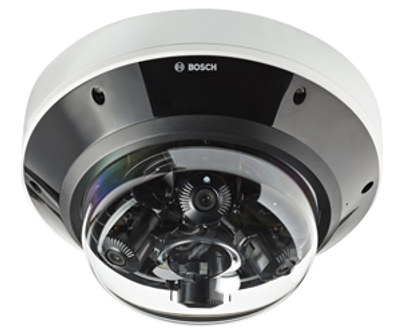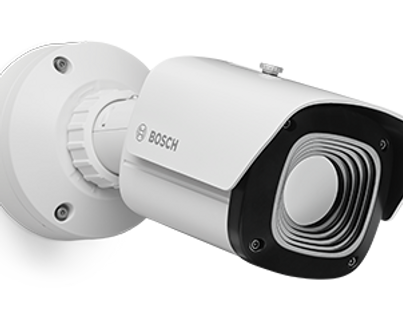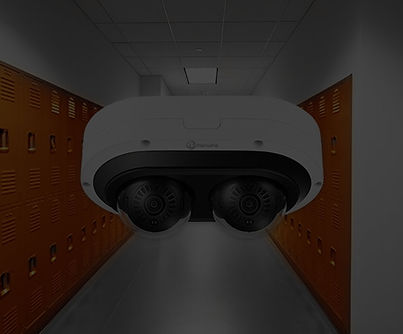AI surveillance means utilizing artificial intelligence in video monitoring systems for security purposes. It means employing deep learning algorithms to process live and recorded videos continuously so as to derive useful insights without necessarily requiring a human analysis.
AI can recognize occurrences, conducts, things, configurations, deviations, visages, number plates, and audios, among other things. As a result of this real-time alerting capability, footage can be searched instantly, crowd analytics facilitated, and even automatic reporting made, among other smart enhancements. In fact, these AI surveillance platforms convert video data into ‘knowledge’ to enhance physical security.
®

Advanced Technology Simplified
In today's fast-paced world, revolutionizing businesses means embracing innovative solutions that empower organizations to thrive. Our approach focuses on delivering powerful tools that are not only effective but intuitive, making it easy for teams to adopt and integrate them seamlessly. Embrace the future of business with solutions that are as dynamic as your vision.

Highlights:
Surveillance Technology
Security and Safety Systems
TECBOMO offers a comprehensive suite of security and surveillance solutions tailored to meet the unique needs of government agencies. Our advanced technologies, including high-definition cameras, intelligent analytics, access control systems, and perimeter security solutions, provide unparalleled protection for critical infrastructure, public spaces, and sensitive facilities.

TECBOMO | BOSCH
The dawn of Monday, April 28, 2025, breaks with an electrifying synergy at the intersection of artificial intelligence and video analytics. TECBOMO, a rising force in innovative technology solutions, announces a groundbreaking partnership with the esteemed Bosch, a global leader in security and safety systems. This collaboration signifies a pivotal moment, poised to redefine how organizations leverage the power of visual data. By integrating Bosch's robust hardware and sophisticated software with TECBOMO's cutting-edge AI algorithms, this alliance is set to unlock unprecedented levels of proactive security and operational efficiency.
At the heart of this transformative partnership lies the promise of "predictive-ready" video systems. This isn't just about capturing and storing footage; it's about intelligent interpretation and foresight. Imagine security systems that can not only detect anomalies in real-time but also anticipate potential risks before they escalate. Envision operational analytics that move beyond historical data to forecast trends, optimize resource allocation, and enhance overall productivity. The fusion of TECBOMO's AI prowess with Bosch's established reliability creates a powerful engine for proactive decision-making across diverse industries, from smart cities and critical infrastructure to retail and manufacturing.
"We should all strive to improve on the status quo: none of us should ever be satisfied with what has been achieved, but should always endeavor to do better." Robert Bosch, 1918

Next generation AUTODOME 7100i: Precision, Intelligence, and Trust - Redefined
The new model adds Starlight technology, enhanced IR, and up to 40x zoom for clear images in low light and inclement weather. It supports up to 3x 8MP streams and runs on the CPP16 platform with improved image processing, streaming, and data security. Advanced AI features include IVA Pro, Intelligent Tracking, and new capabilities like Perimeter, PPE, Appearance, and Privacy (coming Q1 2026). The camera is ideal for city surveillance, traffic monitoring, and critical infrastructure.

TECBOMO | HANWHA VISION
PARTNER EMPOWERMENT
TECBOMO is proud to announce our strategic alliance with Hanwha Vision, a global leader in advanced video surveillance and AI-powered security technology. Through this partnership, TECBOMO now brings Hanwha’s cutting-edge AI surveillance solutions—including intelligent analytics, license plate recognition, people counting, and object detection—to our customers across the region. This collaboration enables businesses to deploy smarter, more proactive security systems that reduce false alarms, enhance operational efficiency, and deliver real-time actionable insights. With Hanwha’s proven reliability and TECBOMO’s expert integration and local support, our customers gain a powerful, future-ready surveillance ecosystem that protects assets, optimizes operations, and provides unmatched peace of mind.

Trigger events... while reducing false alarms
with AI object classification
AI PTZ PLUS devices generate object attribute data to identify people, faces, vehicles, license plates and more.
AI algorithms separate classified objects from their surroundings, such as trees, shadows, or animals, to reduce false alarms.
Contact us for more information.

ARTIFICIAL INTELLIGENCE SURVEILLANCE
Artificial Intelligence (AI) is shaking up the world of surveillance and security. AI and surveillance technology can monitor videos through machine learning algorithms to identify events, objects, behaviors, and patterns that affect the security field. AI surveillance is a technology that will change the dynamics of security as we know it.
What is AI Surveillance?
AI surveillance means utilizing artificial intelligence in video monitoring systems for security purposes. It means employing deep learning algorithms to process live and recorded videos continuously so as to derive useful insights without necessarily requiring a human analysis.
AI can recognize occurrences, conducts, things, configurations, deviations, visages, number plates, and audios, among other things. As a result of this real-time alerting capability, footage can be searched instantly, crowd analytics facilitated, and even automatic reporting made, among other smart enhancements. In fact, these AI surveillance platforms convert video data into ‘knowledge’ to enhance physical security.
How Does AI Surveillance Technology Work?
AI in security and surveillance relies on computer vision techniques like machine learning and deep learning to mimic and surpass human-level video analysis. The system is trained on vast labeled datasets to build sophisticated artificial neural networks.
Once deployed, the AI surveillance system autonomously processes live and archived video feeds. The different capabilities of AI surveillance include:
-
Facial Recognition: One of the most common applications of AI is facial recognition. The algorithm scans faces in video streams and matches them against databases of facial images to identify individuals in real time. This enables identifying VIPs, staff, suspects, and more.
-
Object Detection: Object detection allows the AI to draw bounding boxes around objects like cars, bikes, bags, and animals and classify them. This helps in automatically flagging unauthorized objects.
-
Human Detection: Distinguishing humans from other objects is critical for applications like people counting, human tracking, fall detection, etc. The system can raise alerts when a human is detected in restricted zones.
-
Object Tracking: The AI can lock onto a specific object, like a person or vehicle, and track its path over time across multiple cameras. This helps in pattern analysis and investigation.
-
Crowd Monitoring: By continuously monitoring crowd sizes, densities, and flows, the AI can identify risks like overcrowding or detect anomalies. This enables timely alerts to prevent stampedes and manage crowds.
Intelligent video surveillance for every industry, every application…
Hanwha Vision security and surveillance technologies address every requirement for any professional application. Let us help you better understand every aspect of their business.
RESIDENTIAL & COMMERCIAL SURVEILLANCE
INDOOR | OUTDOOR CAMERAS
In today's fast-paced world, staying connected to your home or business more important than ever. With the help of modern technology, you can now keep an eye on your property no matter where you are. Whether you're on vacation at work, or simply running errands, you can stay connected to your home or business and ensure everything is running smoothly. With this peace of mind, you can focus on the things that matter most to you, that your property is safe and secure.

AI Surveillance
The Future of Security
TECBOMO | REOLONK
PARTNERSHIP EMPOWERMENT
TECBOMO, a leading provider of technology solutions, has partnered with reolink to offer surveillance cameras at scale. With this partnership, TECBOMO is now able to provide AI Surveillance, which uses advanced algorithms to detect and analyze potential security threats. This technology is ideal for businesses and organizations looking to enhance their security measures and protect their assets. TECBOMO's commitment to innovation and excellence is evident in this latest offering, and we are proud to be at the forefront of the industry.

BATTERY-POWERED SECURITY CAMERAS
Delivering innovative products and services that empower users to safeguard their homes and lives. Embracing our core values of innovation, reliability, and user-friendliness, we strive to enhance security experiences and enable our clients to stay ahead with cutting-edge technology.
Benefits of AI Video Surveillance
AI surveillance offers several advantages over traditional video monitoring:





.png)




















_ed.jpg)





.jpg)




